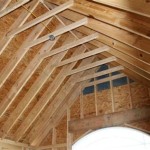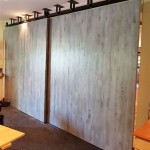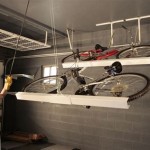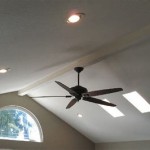How to Replace a Vaulted Ceiling Fan
Replacing a ceiling fan installed in a vaulted or angled ceiling presents unique challenges compared to replacing a fan on a standard, flat ceiling. The angle of the ceiling necessitates specialized hardware and careful attention to installation procedures to ensure the fan is securely mounted, operates effectively, and blends seamlessly with the architectural design of the room. This article outlines the necessary steps and considerations for safely and effectively replacing a vaulted ceiling fan.
Prior to commencing any electrical work, safety is paramount. The first step is always to disconnect the power supply to the ceiling fan at the circuit breaker. This will prevent any risk of electrical shock during the removal and installation process. Verify the power is off using a non-contact voltage tester by holding the tester near the wires connected to the fan. If the tester indicates the presence of voltage, double-check that the correct circuit breaker is switched off. Never assume the breaker is correctly labeled; verify the lack of voltage at the fixture itself.
Once the power is safely disconnected, prepare the work area. Spread a drop cloth or protective covering beneath the fan to catch any falling debris or hardware. Gather all necessary tools and materials, including a screwdriver set (both Phillips head and flathead), wire stripper/crimper, wire connectors (wire nuts), electrical tape, a ladder suitable for reaching the ceiling fan, a new vaulted ceiling fan mounting bracket compatible with the existing electrical box, a new ceiling fan designed for vaulted ceilings, and a voltage tester. It's also beneficial to have a helper available, especially when handling heavier fan motors.
Key Point 1: Removing the Existing Vaulted Ceiling Fan
The removal process requires careful disassembly to avoid damaging the existing wiring or the ceiling itself. Begin by removing the light kit and fan blades. Most light kits are held in place by screws or clips. Carefully detach the light kit and disconnect the wiring harness connecting it to the fan motor. Lower the light kit to the drop cloth. Next, remove the fan blades by unscrewing them from the blade brackets. Keep track of the screws and hardware as they may be needed later for the new fan installation.
The next step involves disconnecting the fan motor housing from the mounting bracket. This typically involves unscrewing the housing from the bracket. The design of the mounting mechanism can vary depending on the model of the fan, so consult the manufacturer's instructions if available. Once the housing is detached, carefully lower the motor and expose the wiring connections. Disconnect the wires by unscrewing the wire connectors (wire nuts) and separating the wires from the old fan and the wires coming from the electrical box in the ceiling. It is generally recommended to take a picture of the wiring before disconnecting, so you have a reference of the wiring connections. After disconnecting the wires, and with help, remove the old fan motor from the mounting plate.
With the fan motor removed, the next step is to remove the old mounting bracket. This bracket is usually attached to the electrical box recessed in the ceiling. Screws typically secure the bracket to the box. Remove these screws, and carefully detach the bracket from the box. It’s important to inspect the electrical box itself at this stage. Ensure it is securely mounted to the ceiling joist and is rated to support the weight of the new ceiling fan. If the box is loose or damaged, it must be replaced with a fan-rated electrical box before proceeding.
After removing the old components, examine the existing wiring. Check for any damage or fraying. If the wiring is damaged, it should be replaced by a qualified electrician. Ensure the wires are long enough to make secure connections to the new fan. If necessary, add wire extensions using wire connectors. Ensure all wire connections are securely crimped and insulated with electrical tape.
Key Point 2: Installing the New Vaulted Ceiling Fan Mounting Bracket
The success of a vaulted ceiling fan installation hinges on the proper mounting bracket. Most new vaulted ceiling fans will come with a bracket that is designed to allow the fan motor to hang down. This is required for the fan to be able to swing properly.
Attach the new mounting bracket to the electrical box. Ensure the bracket is securely fastened using screws suitable for the box type. Some brackets require additional supports or bracing, particularly for heavier fans. Follow the manufacturer's instructions carefully when installing the bracket. Ensure the ball joint or swivel mechanism is properly aligned to allow the fan to hang at the correct angle.
Once the mounting bracket is securely installed, prepare the new ceiling fan motor for installation. This often involves assembling the downrod, which is the pipe that connects the fan motor to the mounting bracket. The downrod must be long enough to provide adequate clearance between the fan blades and the ceiling. For vaulted ceilings, a longer downrod may be necessary to achieve the desired clearance. Follow the manufacturer's instructions for assembling the downrod and attaching it to the fan motor.
After the downrod is connected to the fan motor, run the wiring from the motor through the downrod. This typically involves feeding the wires through a hole at the top of the downrod and out the bottom. Be careful not to damage the wires during this process. Secure the downrod to the fan motor according to the manufacturer's instructions.
Key Point 3: Wiring and Securing the New Ceiling Fan
With the mounting bracket in place and the fan motor assembled, the next step is to connect the wiring. Carefully lift the fan motor and downrod assembly and hang it from the mounting bracket. Most mounting brackets have a hook or clip that allows the fan to be temporarily suspended, freeing up both hands for wiring. Connect the wires according to the wiring diagram provided with the new fan. Typically, the black wire from the fan connects to the black (hot) wire from the ceiling, the white wire from the fan connects to the white (neutral) wire from the ceiling, and the green or bare copper wire from the fan connects to the green or bare copper (ground) wire from the ceiling. Use wire connectors to securely join the wires, ensuring a tight connection. Wrap the wire connectors with electrical tape for added insulation.
After connecting the wiring, carefully tuck the wires into the electrical box, ensuring they are not pinched or damaged. Slide the fan motor housing up towards the mounting bracket and secure it in place according to the manufacturer's instructions. This usually involves aligning slots in the housing with pins on the bracket and rotating the housing to lock it into position. Ensure the housing is securely attached and there are no gaps or loose connections.
The next step is to attach the fan blades to the blade brackets. This may involve assembling the blade brackets to the blades themselves before attaching them to the fan motor. Follow the manufacturer's instructions for attaching the blades and brackets. Ensure the blades are securely fastened and evenly spaced. Imbalanced blades can cause the fan to wobble and vibrate excessively.
Finally, attach the light kit to the fan motor. Connect the wiring harness from the light kit to the fan motor. Secure the light kit to the motor housing using screws or clips. Install the light bulbs or LED modules according to the manufacturer's instructions. Test the fan and light kit to ensure they are functioning correctly. Turn the power back on at the circuit breaker and test the fan at all speed settings. Verify that the light kit is working properly.
After testing the fan and light kit, perform a final inspection. Check for any loose screws or connections. Ensure the fan is not wobbling or vibrating excessively. If necessary, use a balancing kit to adjust the blades and eliminate any wobble. Clean up the work area, removing any debris or packing materials. Dispose of the old fan components properly. With the installation complete, the new vaulted ceiling fan should provide years of reliable service.

How To Install A Ceiling Fan On Sloped Lemon Thistle

Ensuring Proper Ceiling Fan Installation With Vaulted Ceilings

How To Install Vaulted Ceiling Fan

How To Choose A Ceiling Fan For Vaulted Ceilings Lightology

How To Install A Ceiling Fan On Sloped Lemon Thistle

How To Choose A Ceiling Fan For Vaulted Ceilings Lightology

How To Install A Ceiling Fan On Sloped Lemon Thistle

Fans On An Angle Installing Ceiling Angled Or Raked

How To Install A Ceiling Fan On Sloped Ehow

How To Choose A Ceiling Fan For Vaulted Ceilings Lightology
Related Posts








